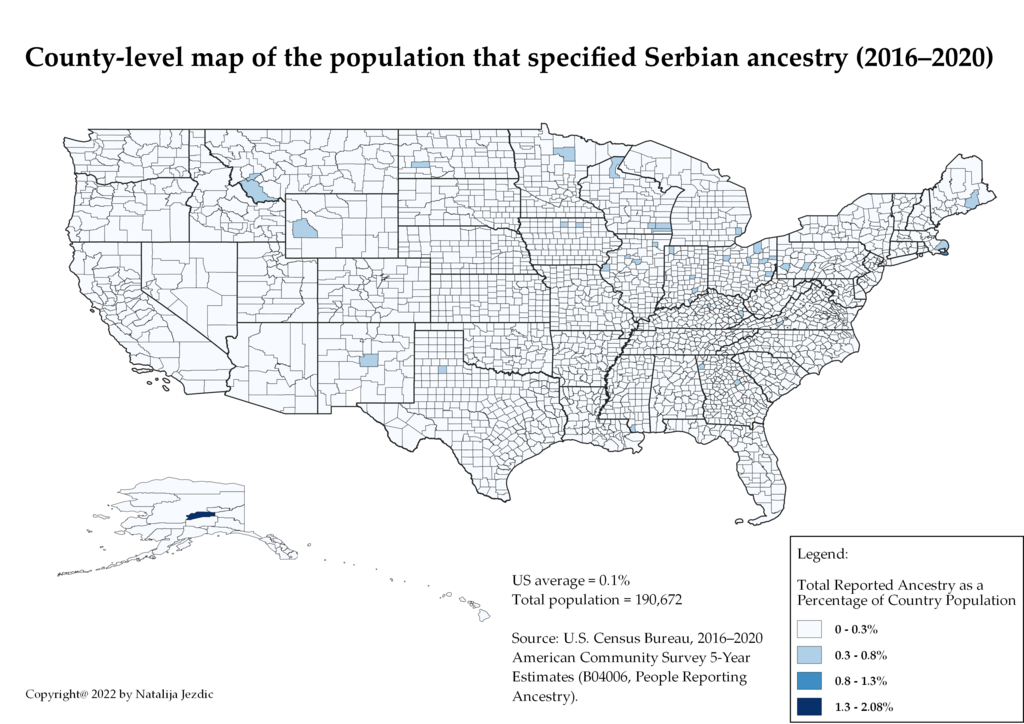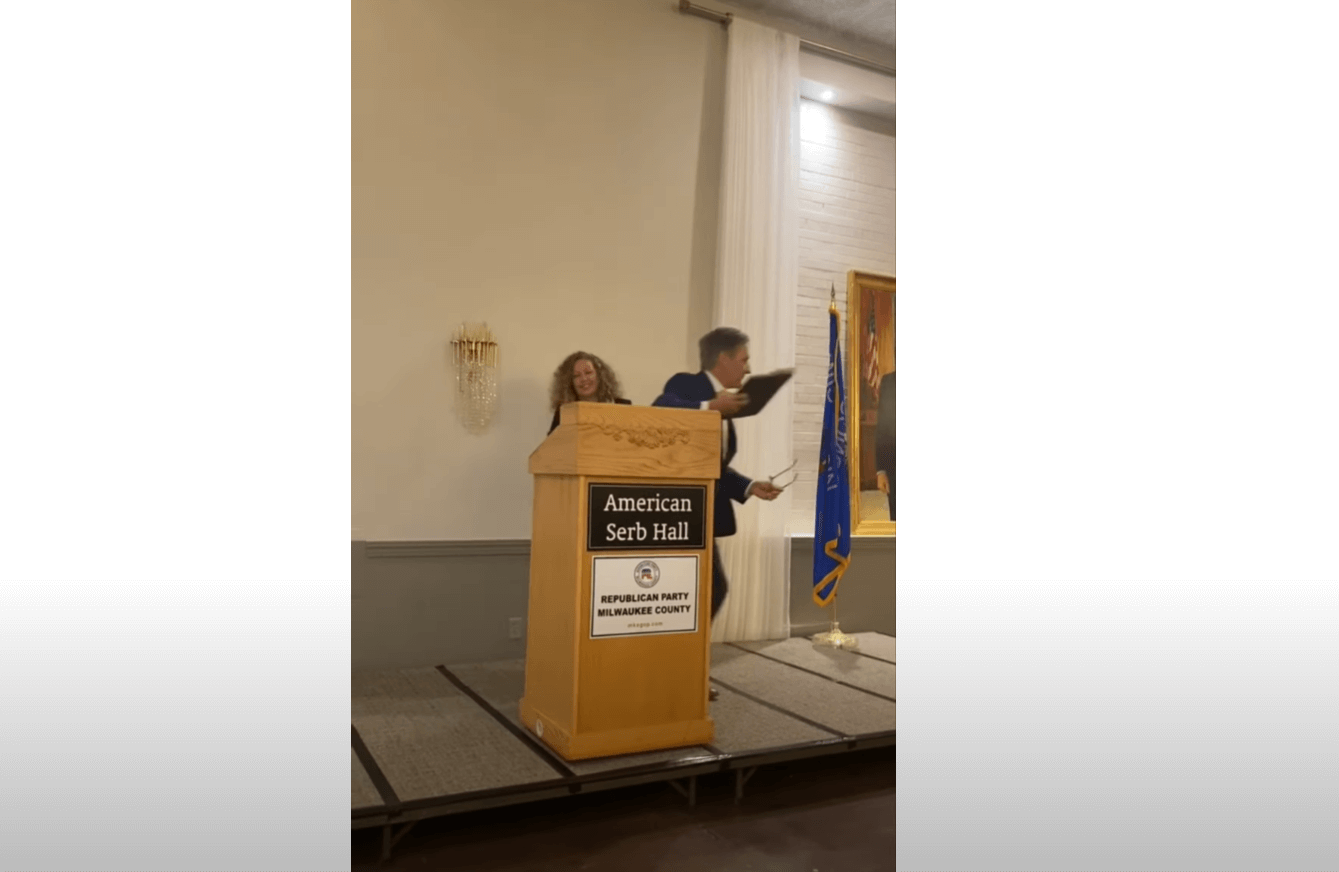
The TRUMP Affect/Effect on Global Stability w/ Special Guest Dr. Olga Ravasi
The TRUMP Affect/Effect on Global Stability w/ Special Guest Dr. Olga Ravasi In this post I am expressing my 1st Amendment Right of #FreeSpeech
After more than 200 years of their journey in the United States of America, Serbs are still chasing the American dream. No matter how long they have been part of American society, they have always acted as good citizens and patriotic Americans while preserving their faith, tradition, and Serbian culture. According to some estimates, there are over a million American Serbs in the U.S. today. Is this true? Learn more about this widely debated topic below.
It has been more than 200 years since Serbs were first registered in the USA as immigrants. Until then, there have been several mass immigration waves of Serbs to America. Although there is a long and rich history of Serb immigration to the United States, today, we’ll focus on their current affairs.
Most Serbs in the United States today live in Chicagoland. Chicago has a big Serbian community. Some believe a few hundred thousand ethnic Serbs live in the windy city. Other major Serbian-American communities are Cleveland, Pittsburgh, Milwaukee, Miami, Los Angeles, New York, Phoenix, and so on.
The public considers them a valuable community and appreciates that they follow a set of ideals and values that America represents.
Yet, the first question about them remained unanswered—How many American Serbs are in the U.S. today?
To begin, it is important to understand that there are at least three generations of Serbs of various statuses.
The first generation of mass immigrants from the 19th and the beginning of the 20th century mainly consisted of Serbian people from Lika, Kordun, Dalmatia, Knin, Slavonia, and other territories that were not part of Serbia.
Consequently, U.S. authorities often omitted to classify them as Serbs. That was especially the case during the 19th century. Many of them had children and grandchildren, and all of them became Americans as U.S. citizens. Many of them were classified by the region from which they came, usually the Austro-Hungarian Empire. However, they were Serbs by birth.
The second generation of immigrants who arrived after or during WWII consisted of people from Serbia, Montenegro, and the former Kingdom of Yugoslavia overall. As a result, they declared themselves Yugoslavs rather than Serbs in censuses.
The third generation of immigrants came to the U.S. after the war in Yugoslavia.
While each generation of Serbian immigrants has its story, let’s fast-forward to the 21st century and the U.S. census results.
The United States conducts a population census every ten years. While we’re still waiting for the results of the latest one (2020), it’s interesting to look back at the data recorded a decade ago (2010).
Based on census data, 178,000 people declared Serbian ancestry. This is nearly twice as few as Serbian ancestry was recorded in the 2000 census results (350,000).
On the other hand, some ethnicities from the Balkans had more descendants recorded. For example, the 2010 United States census recorded over 430,000 Americans of Croatian ancestry. Likewise, Slovenians were also greater in numbers recording (179,806).
Taking into account the population of Serbs and mentioned ethnicities of the Balkans, and the immigration history of all three nationalities, it’s impossible not to conclude that—Americans of Serbian ancestry are far smaller in number than they really are in reality!
Why is it so?
There is more than one reason why many avoided declaring themselves “Serbs.” The complexity of Yugoslavia, mixed marriages, status that Serbs had in the media during the last 30 years are definitely at the top of the list.
Given these factors and the rapid integration of foreigners today, the official number of “Serbs” within the Serbian-American community is far from correct.
As we wait for the 2020 Census results, we can check the results from the U.S. Census Bureau for 2016–2020 (American Community Survey 5-Year Estimates).
American Community Survey (ACS) 5-year survey estimates the population’s characteristics over a specific period. The difference between ACS and the census is that ACS provides yearly information about social and economic needs. In contrast, the census is conducted every ten years and provides an official count of the entire U.S. population.
According to ACS, there are around 190,000 Serbian-Americans (2016–2020).
Almost the same number of U.S. citizens declared Yugoslavian ancestry. We can assume that the majority of them are of Serbian descent. Still, they decided to declare themselves as Yugoslavs.
The map below presents the percentage of the Serbian ancestry population at the County level.

The survey had single and multiple ancestry options. For instance, you could have Yugoslavian and Serbian ancestry simultaneously. But that didn’t affect the overall results much, and they don’t differ significantly from the 2010 census results.
However, we shouldn’t allow statistics to mislead and discourage us because there are definitely a lot more American Serbs in the country.
We can only give an approximate answer to this question based on the various data gathered from the official US figures, church records, and scarce sources from the Serbian government.
Some estimations conducted more than 15 years ago said more than a million.
That means at least five times more than the official statistics shows.
This is the reason for Serbian-American organizations leading the campaign before the Census 2020 to get all the Serbs and Serbian descendants declared and accounted for. Our community deserves the same minority rights as other ethnic communities in America, so it’s important to show how many of us are there.
The more we are, the greater our rights in the United States are.
But, being a part of our community requires more than just returning to the community on census day or every now and then. Serbian American voices must be heard consistently.
To accomplish that, we should regularly gather and contribute to our cause.

The TRUMP Affect/Effect on Global Stability w/ Special Guest Dr. Olga Ravasi In this post I am expressing my 1st Amendment Right of #FreeSpeech

Serbs for Trump 2024 Deliver Wisconsin at the RNC Serbs for Trump 2024 team launches the Deliver Wisconsin initiative at the Republican National Convention, with

We The People 2024 Milwaukee Serbs for Trump 2024 campaign kick-off in partnership with the Milwaukee County GOP at the historic American Serb Hall, featuring
© SERBIAN AMERICAN VOTERS ALLIANCE (SAVA PAC) 2025. All Rights Reserved.
proudly developed by Serbian-American patriots at Executive Digital